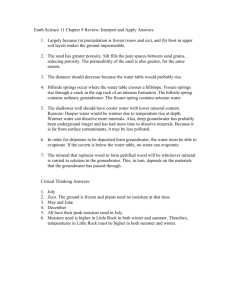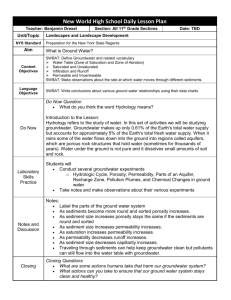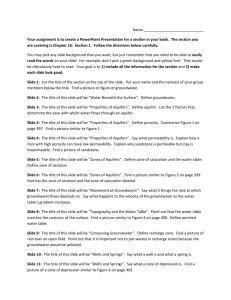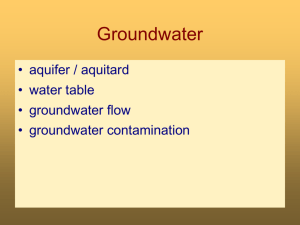Groundwater PPT
advertisement
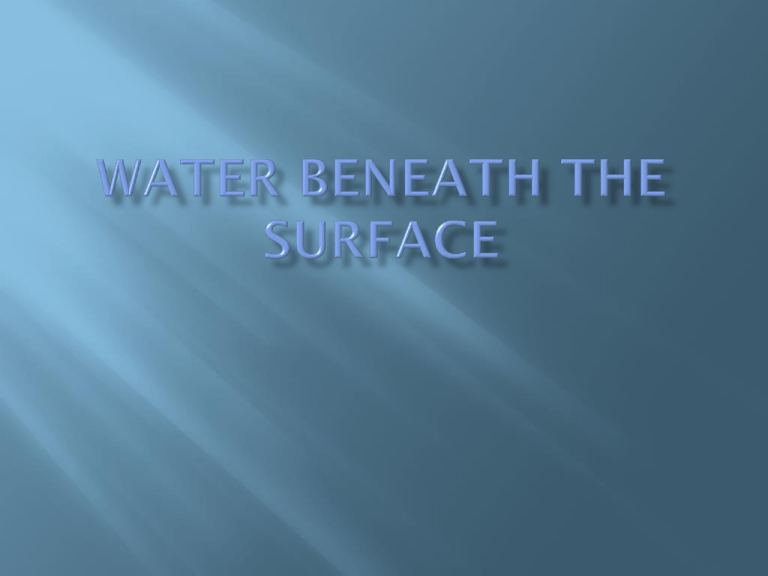
Last week we discussed how run-off can occur two different ways: Surface Run-off – water flowing on the surface to streams, rivers and oceans. Subsurface Run-off – water absorbed by and flowing under the ground. It still flows back to oceans. Aeration Zone – the zone that lies between the water table and the Earth’s surface Saturation Zone – The layer of an aquifer where the pore space is completely filled with water. Water Table – the boundary line of the zone of saturation. Infiltration is the process of water entering the soil. Since water has infiltrated (entered) the soil, it is considered groundwater. POROSITY Groundwater seeps down through the soil and fills the pores, or spaces between rock particles. Porosity is the indicator of how much groundwater those pores can store. PERMEABILITY Sometimes the pores in the ground are connected to each other. Permeability is the ease that water can pass through a porous material. A substance is impermeable if water cannot flow through it. Which picture shows greater porosity? Which picture shows lesser porosity? Which picture shows the most permeability? Which picture shows the least permeability? An underground body of rock or sediment where large amounts of water can flow and be stored is called an aquifer. Wells and Springs A WELL is a manmade hole dug in order to access groundwater. It is manmade, so it is not natural. A SPRING is a place where the water table naturally meets the ground’s surface. It is a natural flowing of water from a natural hole in the ground. Wells and springs are divided into two groups – Ordinary - Artesian ORDINARY WELL An ordinary well is a hole that is dug below the water table to bring groundwater to the surface ORDINARY SPRING An ordinary spring is a natural flowing of groundwater out onto the surface ARTESIAN WELL A manmade hole where water flows freely without being pumped ARTESIAN SPRING Water flowing through cracks in impermeable rock

